PROTECT YOUR DNA WITH QUANTUM TECHNOLOGY
Orgo-Life the new way to the future Advertising by AdpathwayOrnamental grasses have value in both functional and aesthetic gardening. They offer a unique combination of beauty, resilience, and low-maintenance charm. If you’re landscaping in tough conditions, such as hot, dry climates, these versatile plants have a lot to offer.
Many ornamental grasses require little care, even under harsh conditions. They are ideal for poor or sandy soil types, and typically quite drought-resistant. They need little fertilizer, and usually only one pruning per year (an annual cutback). They’re also great for preventing erosion.
For movement, texture, and four-season appeal in your hot, dry garden, ornamental grass is a great option. Many also have great wildlife appeal, providing nesting material and food for birds. Check out these ornamental grasses that will add beauty and function to your hot, dry garden.
Blue Grama Grass

The Premium Seed Starting
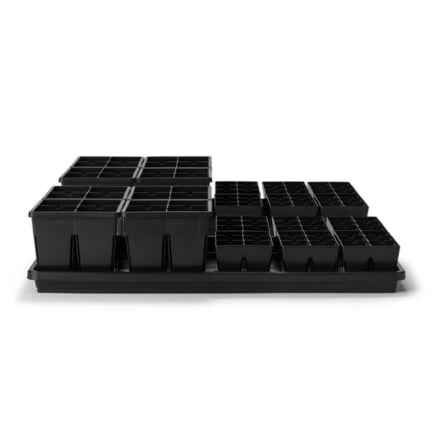
The Premium Seed Starting Kit
Seed Starting Grow Lights

Epic Seed Starting Grow Lights Standard

Blue Grama
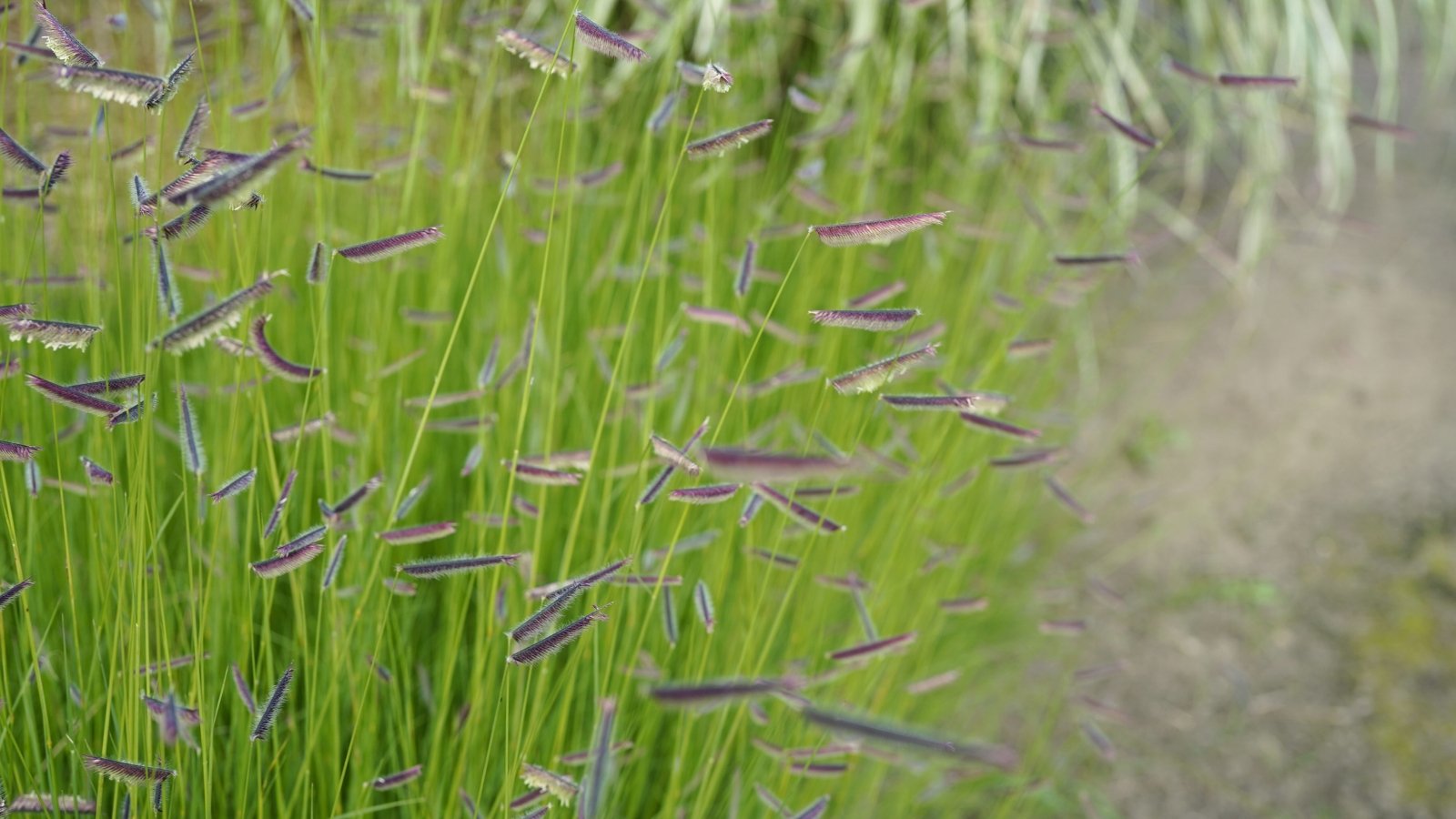 Adds natural charm without needing much water or fuss.
Adds natural charm without needing much water or fuss.Blue grama grass is an attractive, hardy ornamental grass that thrives in hot, dry climates. It’s a standout choice for low-water landscapes, prairies, xeriscapes, and meadow gardens. This grass is native to dry plains and deserts, so it thrives in low-water conditions.
The fine, soft, blue-green foliage has a striking appearance. The unique, curved seed heads add more texture and interest in the fall and winter. The entire plant turns tan in the winter. Blue grama is especially prized for its unique seed heads, drought tolerance, and ecological value.
Little Bluestem
 Blue-green blades brighten gardens before turning copper in fall.
Blue-green blades brighten gardens before turning copper in fall.Little bluestem is a beloved native prairie grass that brings beauty, toughness, and ecological value to any landscape. This ornamental grass is well-suited to hot, dry, and poor-soil environments. This is one of the most important native grasses in North America. It’s well-suited to meadow gardens and pollinator habitats.
With striking blue-green foliage in spring and summer, this grass has lots of curb appeal. It turns red or copper in the fall, and the silver seed heads that remain create a lot of texture and color. It will remain upright in the winter.
Little bluestem is a host plant for skipper butterflies, and the seeds feed small birds in fall and winter.
Mexican Feather Grass
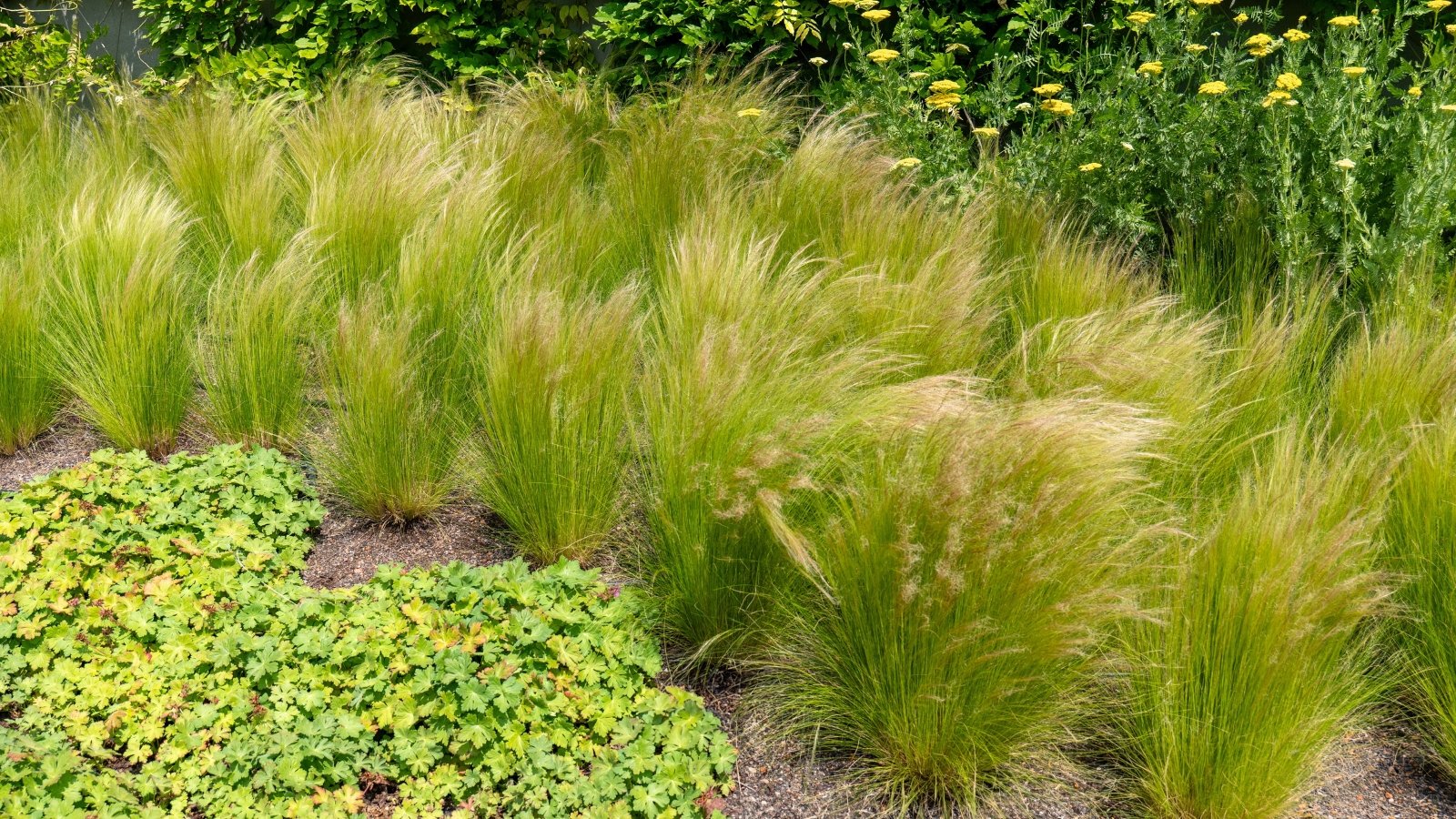 Loves sun and tolerates drought without asking for much.
Loves sun and tolerates drought without asking for much.Mexican feather grass is a graceful, fine-textured ornamental grass for hot, dry climates. It’s best known for its elegant movement, low water needs, and soft, feathery plumes. Native to arid regions of the southwestern U.S. and Mexico, it’s ideal for tough climates. It does produce an ample number of seeds, and in some regions, it is invasive.
If you’re able to grow it in your region, this is a lovely option. It’s soft, fine leaves create a flowing effect when they catch a breeze. It’s happy in poor, sandy, and rocky soil types. This ornamental grass is wonderfully drought-tolerant once established.
Pink Muhly Grass
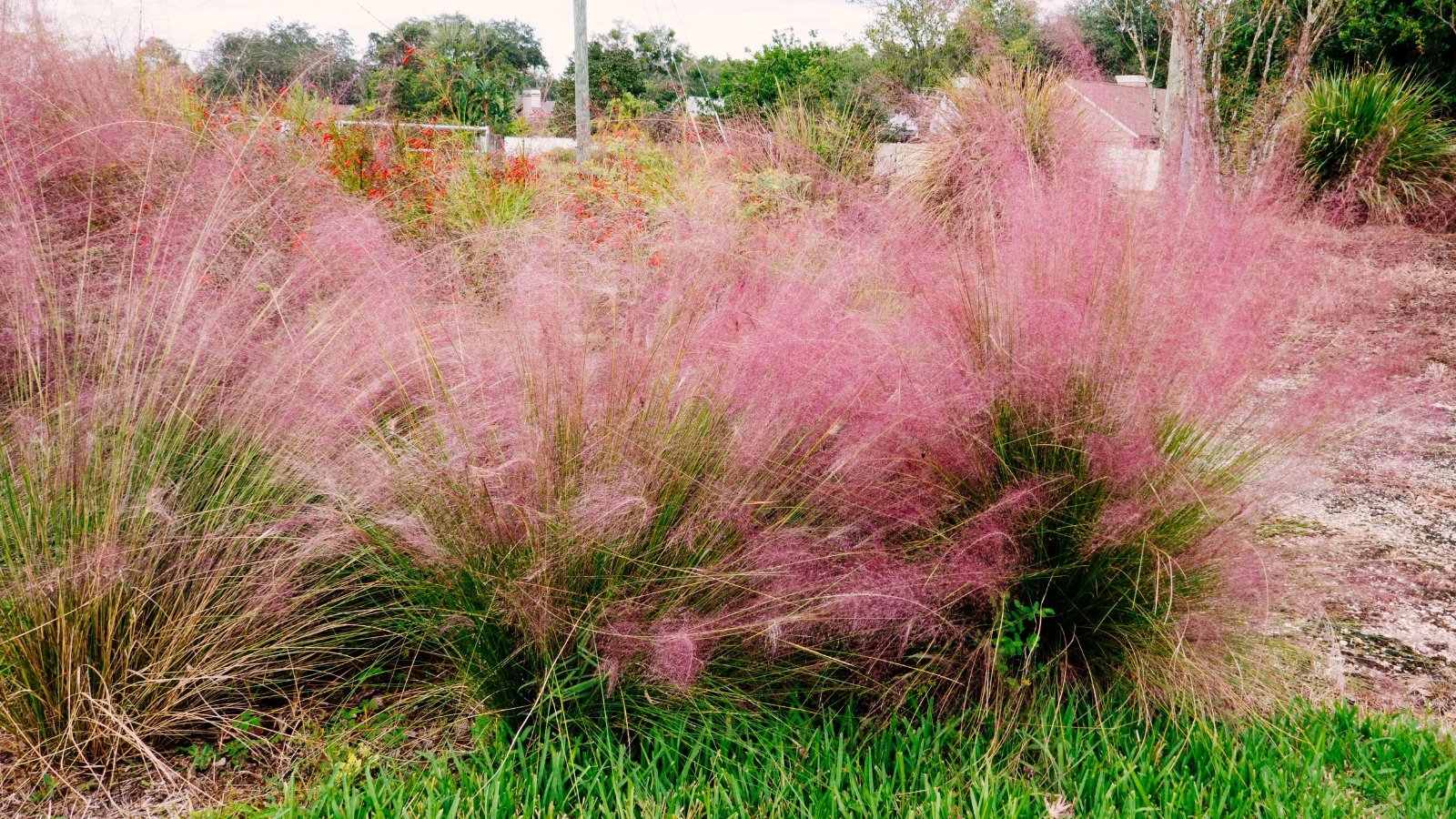 Quiet most of the year, then bursts into glowing color.
Quiet most of the year, then bursts into glowing color.Pink muhly grass is a stunning ornamental grass beloved for its eye-catching pink plumes. It’s tough and low-maintenance, and thrives in hot, dry, sunny locations. This combination makes it a top choice for drought-tolerant gardens, meadow plantings, and naturalistic landscapes. It’s also salt-tolerant and works well in coastal gardens.
For most of the year, pink muhly grass is unassuming but attractive. In the fall, it produces airy pinkish-purple flower plumes. When the sun hits them, they appear to glow. It’s exceptionally low maintenance for the amount of interest this grass lends to the autumn landscape.
Deer Grass
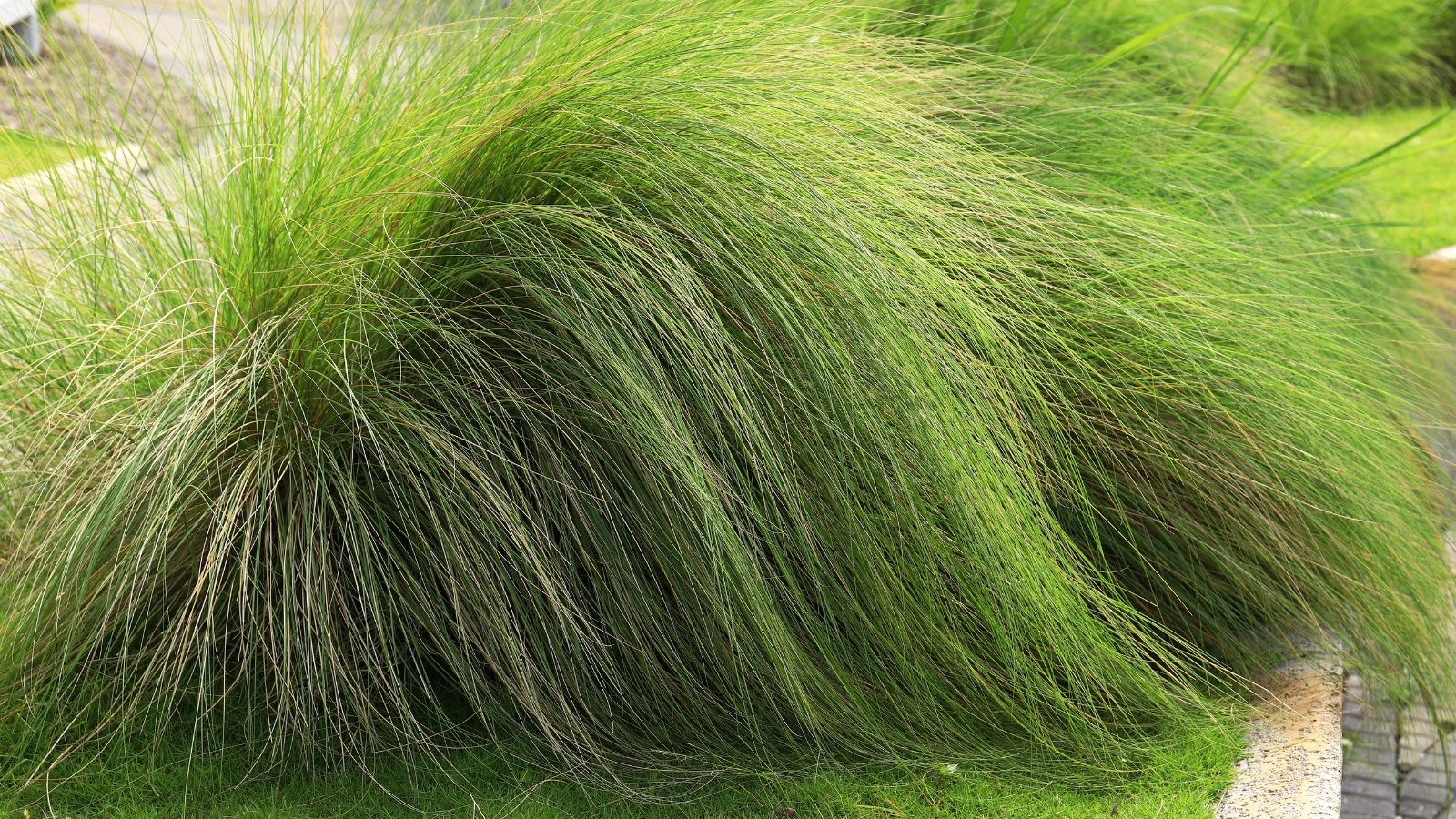 Native charm that holds strong against drought and rough ground.
Native charm that holds strong against drought and rough ground.Deer grass is a tough, beautiful, and drought-tolerant native bunchgrass from the southwestern U.S. It’s prized for its architectural form, fine-textured foliage, and tolerance for hot, dry landscapes.
This relative of pink muhly is ideal for xeriscaping and wildlife gardens. It’s particularly useful for erosion control, especially in semi-arid climates.
If you want something dramatic, deer grass is a large, showy species. It adds both structure and softness to the landscape, and looks wonderful when caught in a breeze. This ornamental grass needs little to no care once established. The seeds are attractive to birds, and this grass thrives in poor, sandy, and rocky soil types.
Purple Threeawn
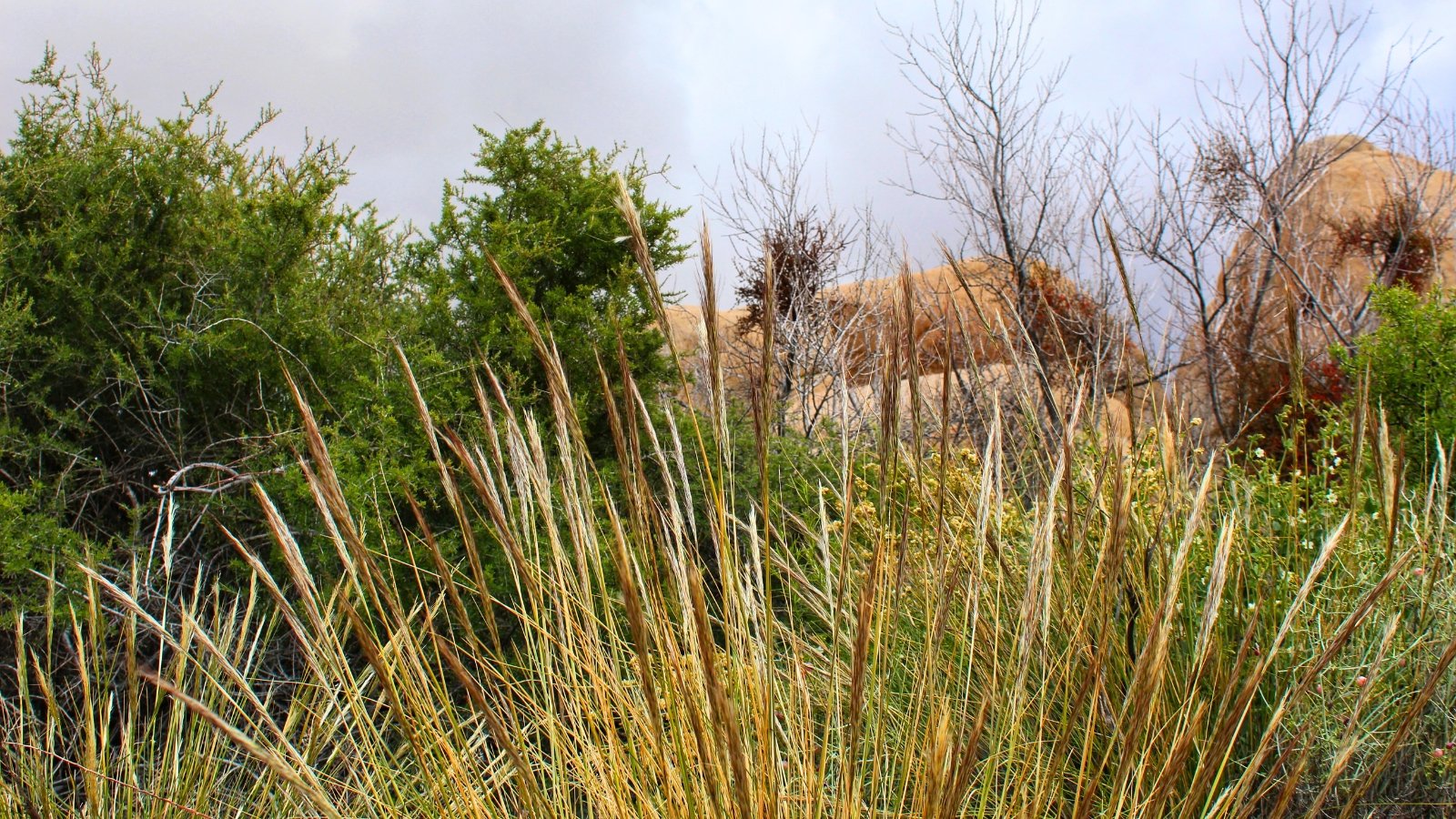 Hardy and tolerating drought, it’s a keeper for dry spots.
Hardy and tolerating drought, it’s a keeper for dry spots.Purple threeawn is a graceful, native bunchgrass well-suited to hot, dry, open landscapes. It’s best known for its purple-tinged, airy seed heads. This ornamental grass is good for hot, dry climates and poor, arid soils. It’s ideal for naturalistic plantings, wildlife gardens, and restoration projects.
Purple threeawn is a low-growing plant with a clumping habit. It needs little water to thrive and is nearly indestructible once established. The attractive, airy seed pods are the defining feature of this ornamental grass. They are purple-tinted and shimmer in a breeze. They also provide food for native insects and birds.
Fountain Grass
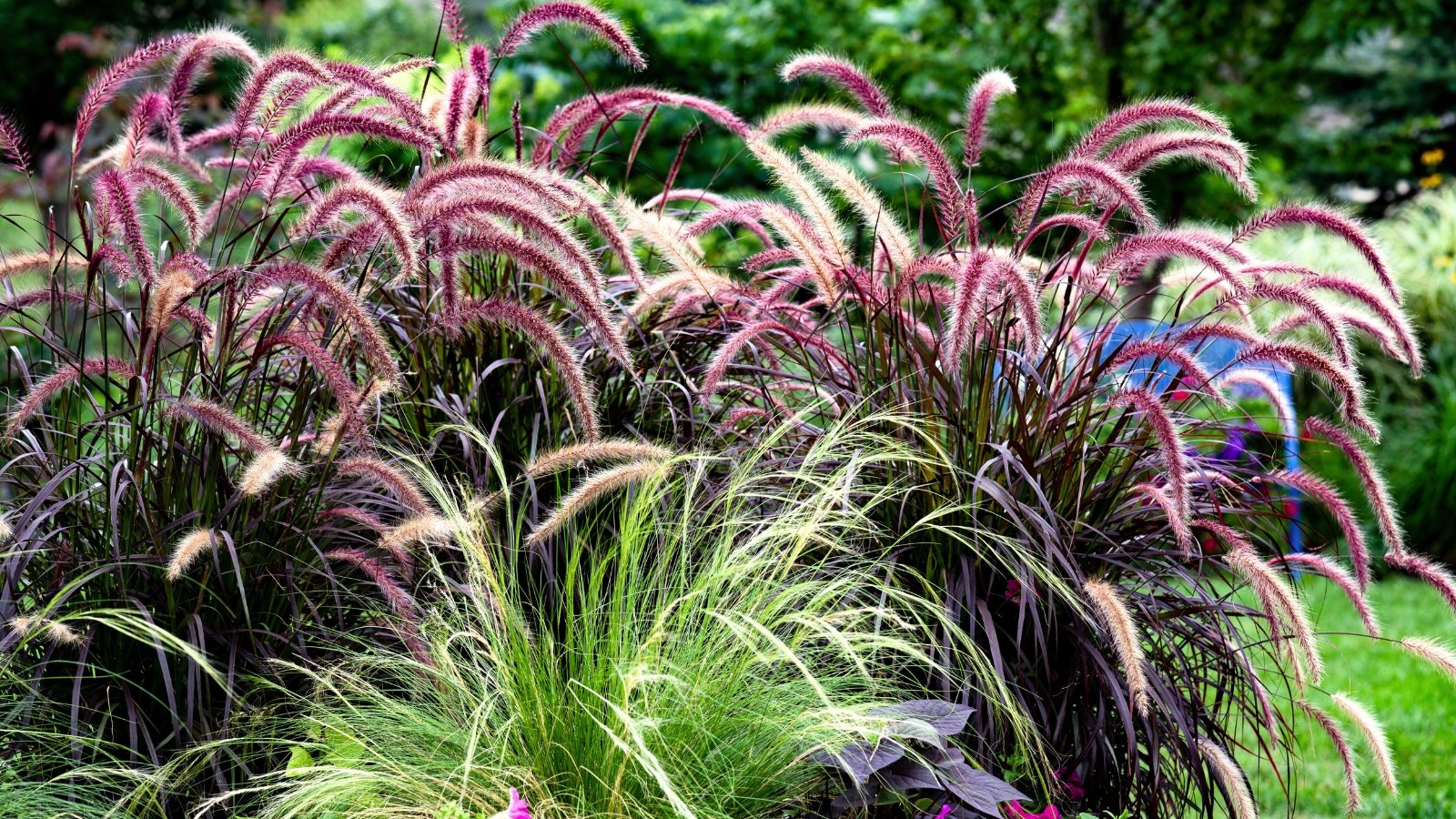 The clumping form makes a graceful fountain of purple-tinted spikes.
The clumping form makes a graceful fountain of purple-tinted spikes.Purple fountain grass is a graceful, fast-growing ornamental grass that thrives in hot, dry climates. It’s best known for its arching form and soft, bottlebrush flower spikes. It’s widely used in landscape borders, containers, and xeriscapes for its dramatic movement and low-maintenance nature.
This is a clumping grass with a fountain-like appearance. It has elegant, showy flower spikes that look like plumes or fox tails. Some types of fountain grass are invasive in warm regions, so make sure to select a sterile cultivar like ‘Rubrum.’ The flower spikes are attractive to pollinators, and the seeds provide food for some songbirds.
Blue Fescue
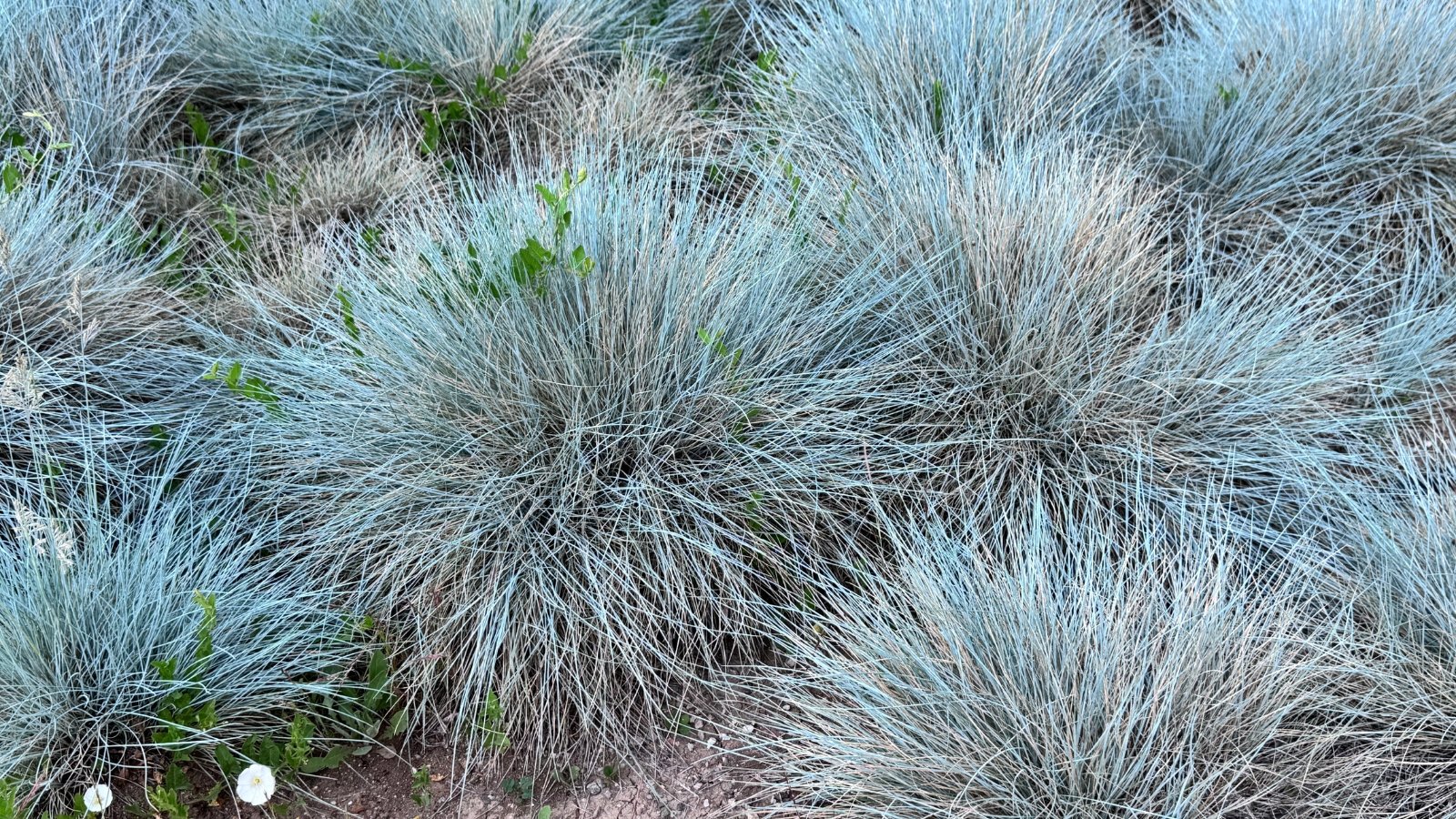 Neat shape and color stay vibrant almost all year.
Neat shape and color stay vibrant almost all year.Blue fescue is a compact, clumping ornamental grass. It’s prized for its icy blue foliage, neat mounding shape, and drought tolerance. It’s an ideal addition to your hot, dry climate. This is a favorite for modern landscapes, offering year-round color and texture in small spaces. It’s low-growing, so it’s nice for borders.
Blue fescue is one of the bluest of the blue ornamental grasses. In mild climates, it retains its color year-round. It doesn’t mind poor soil and works well in urban settings. It’s a neat and tidy plant, and not invasive. It doesn’t perform well in clay or other heavy soil types.
Giant Sacaton
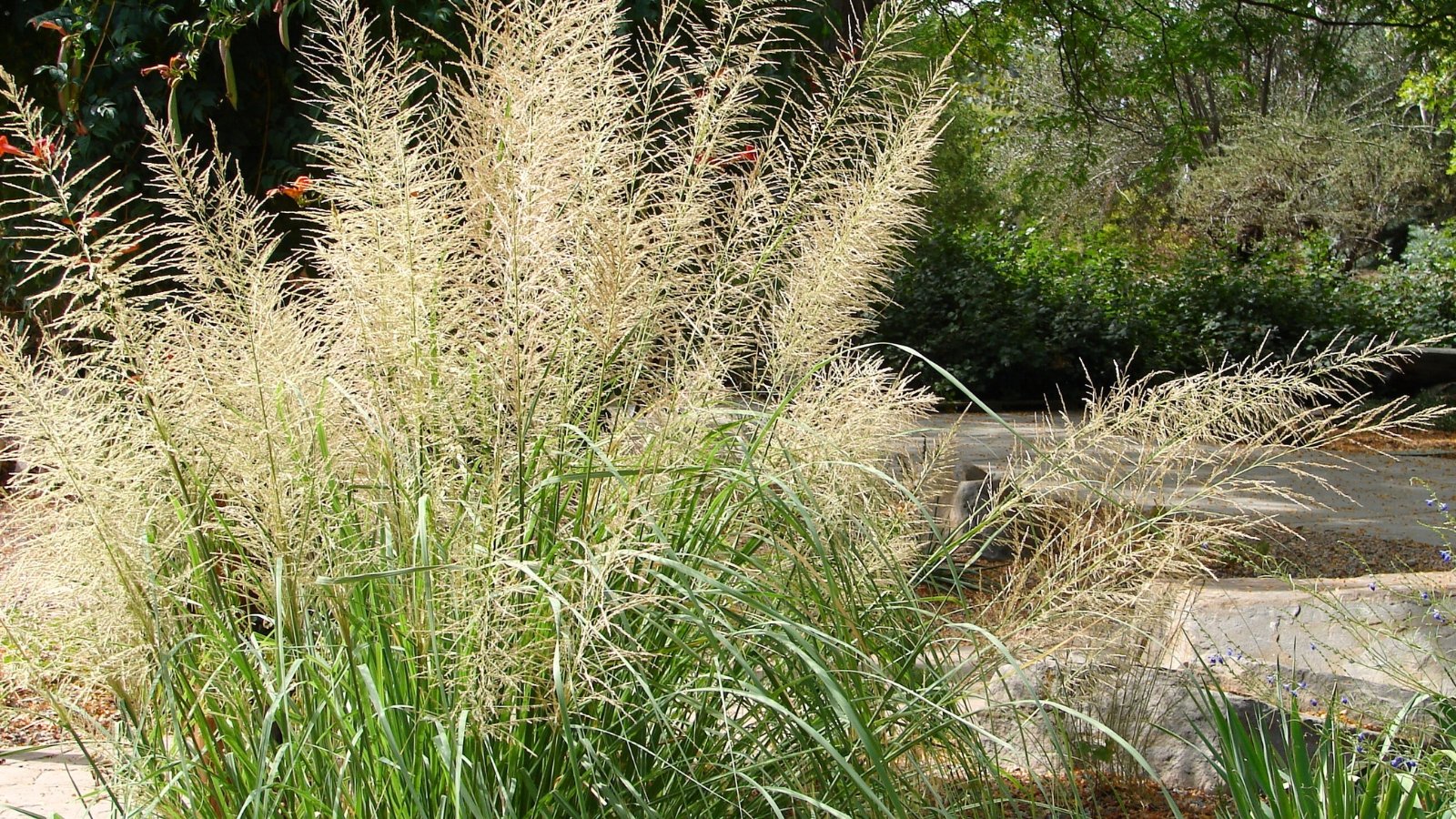 Tall clumps create a soft, natural privacy screen easily.
Tall clumps create a soft, natural privacy screen easily.Giant sacaton, also known as great sacaton, is a tough, towering bunchgrass. It’s a native of the American Southwest, making it an ideal ornamental grass for hot, dry, and sunny climates. It provides structure, movement, wildlife value, and erosion control in drought-prone landscapes.
Among native grasses, it’s one of the largest and most dramatic. A grouping of these makes a stunning privacy screen. Towering up to seven feet tall when it blooms, the large bunches have a soft, diffused glow in the sun. In late summer and fall, golden seed heads add additional interest to this grand ornamental grass.


 2 days ago
10
2 days ago
10
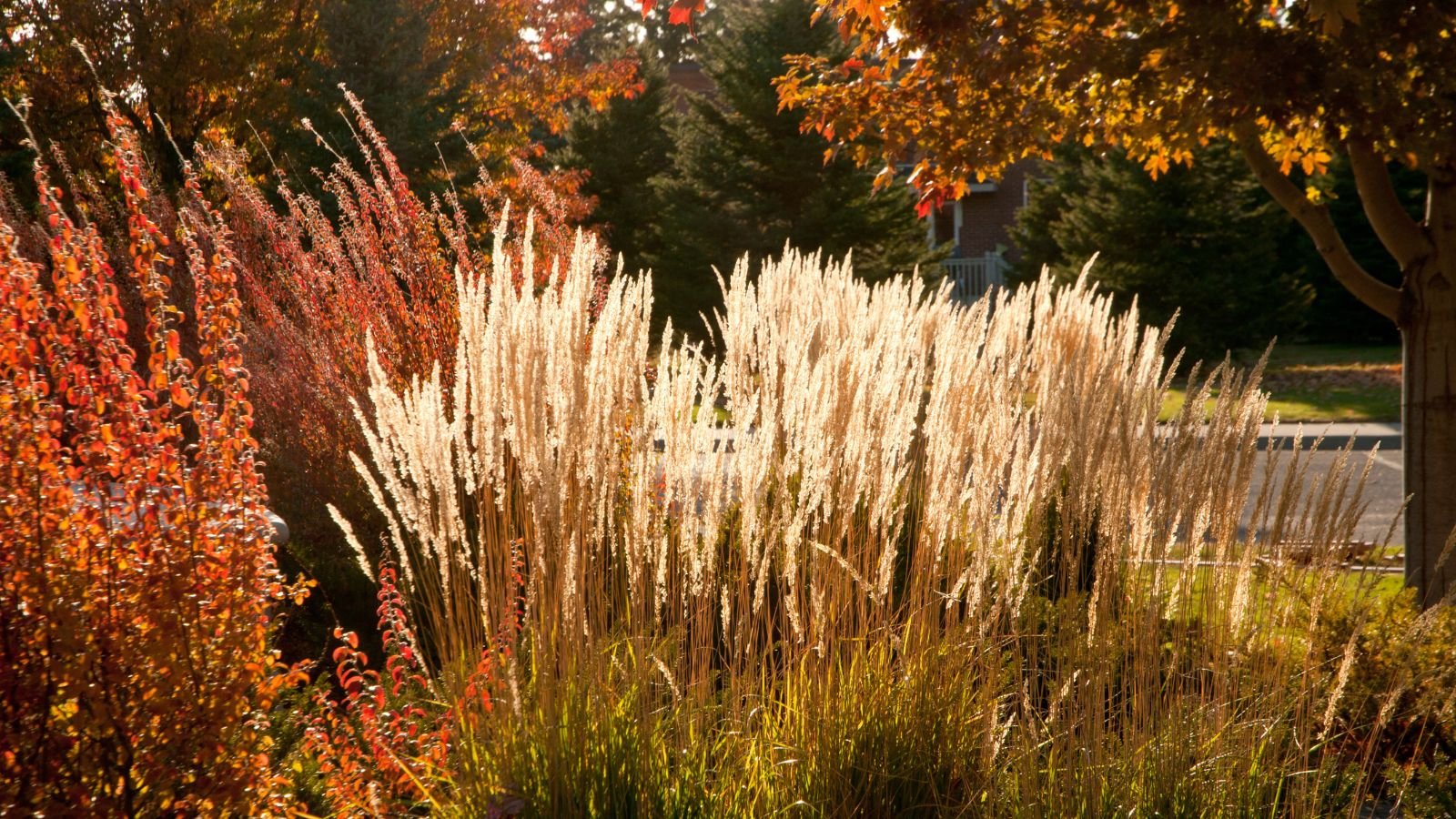



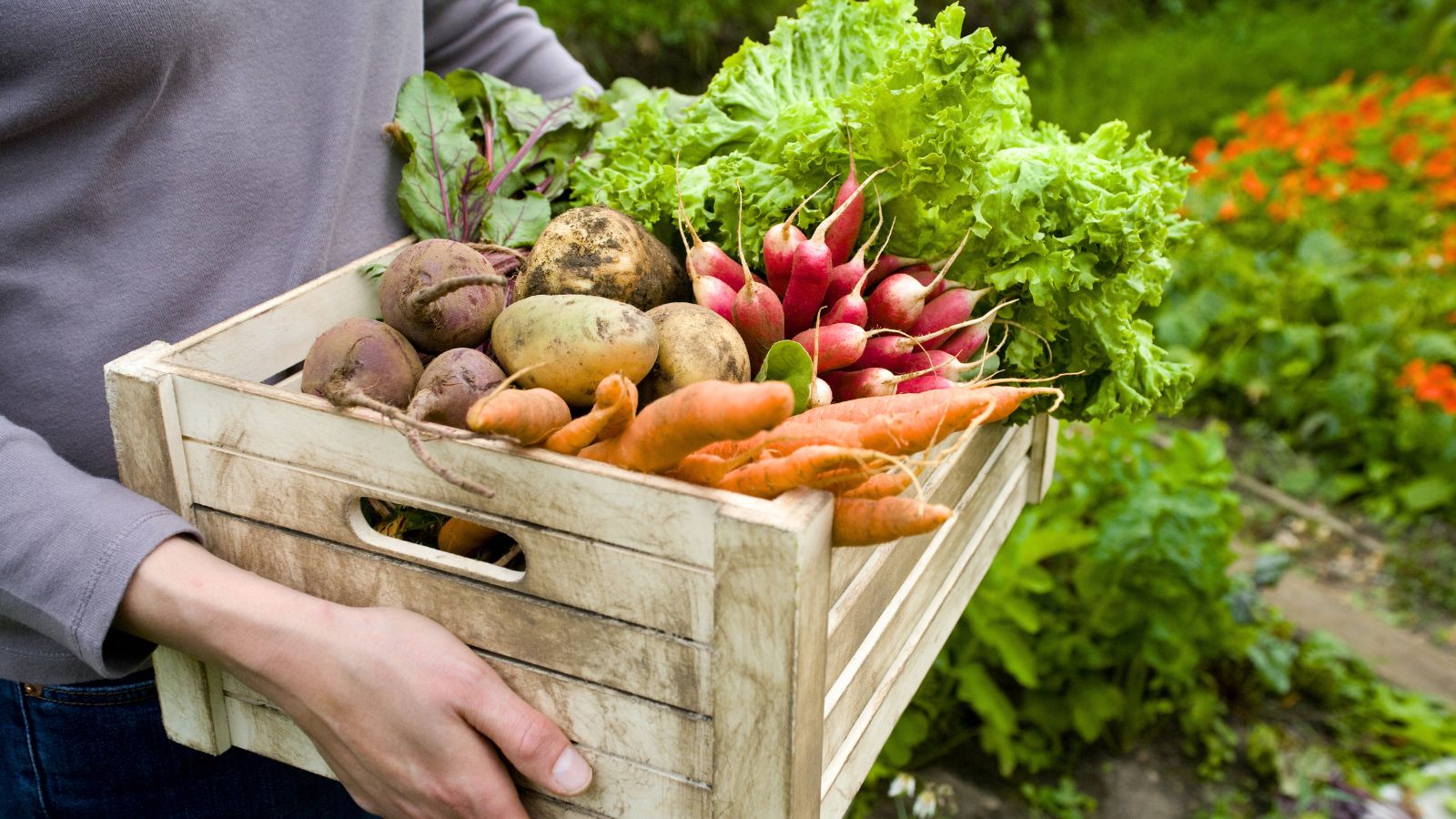
















 English (US) ·
English (US) ·  French (CA) ·
French (CA) ·